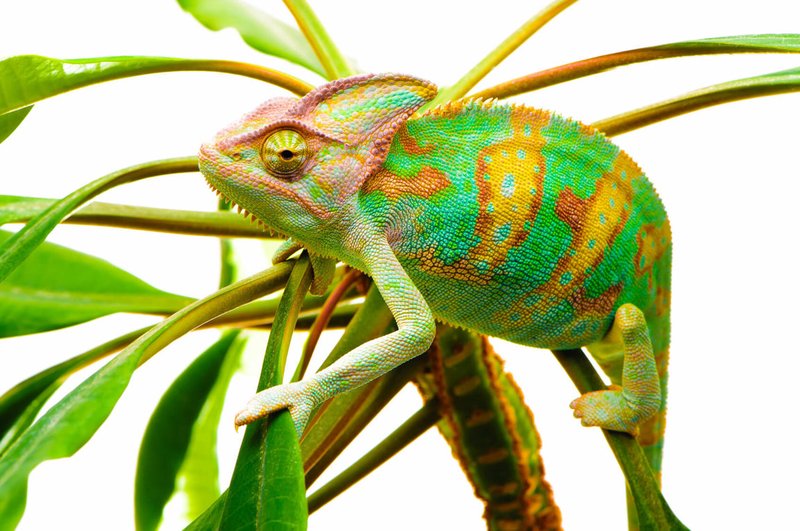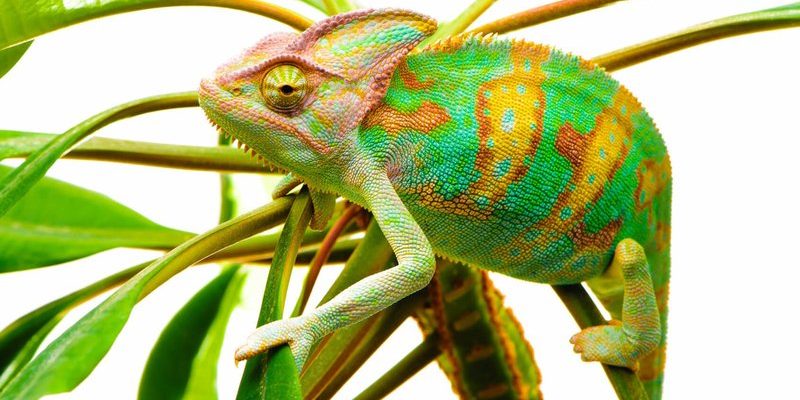
But don’t worry, I’m here to help you out. Identifying a chameleon takes some keen observation and a bit of patience, but it can be incredibly rewarding. Whether you’re an enthusiastic nature lover or just curious about wildlife, knowing how to spot a chameleon adds a fun layer to your outdoor adventures. So, grab your binoculars and let’s dive into the world of these fascinating reptiles!
Understanding Chameleons: The Basics
Chameleons are part of the family Chamaeleonidae and are known for their spectacular color-changing abilities. This change isn’t just for show; it helps them communicate, camouflage themselves from predators, and even regulate their body temperature. Generally, you can find chameleons in warm habitats, particularly in Madagascar, Africa, and parts of Asia.
One interesting fact is that not all chameleons change colors in the same way or for the same reasons. For instance, when feeling threatened, some might turn dark, while others display bright hues to attract mates. It’s like they’re putting on a show just for you—talk about a captivating creature!
So, when looking for chameleons, keep in mind their environment. Dense foliage, trees, and shrubs provide the perfect homes for these reptiles. They enjoy heights, often perching on branches, which can make them tricky to spot if you don’t know what to look for.
Key Features to Look For
When you’re out there looking for a chameleon, knowing what physical traits to observe can really help. These animals are unique in several ways. First, their eyes are particularly striking. They have the ability to move independently, meaning one eye can focus on a branch while the other scans for danger. If you see an animal with this cool characteristic, you might just have a chameleon on your hands!
Next, observe their bodies. Chameleons come in a variety of shapes and sizes. Some are slender, while others can be quite stocky. Many species exhibit their vibrant colors, which can range from greens and blues to warm yellows and oranges depending on their mood and surroundings. These colors help them blend in, so it’s best to look for them during times when they’re either calm or in a display mode.
Finally, pay attention to their tails. Chameleons have prehensile tails that can wrap around branches—like nature’s built-in climbing gear. If you spot a lizard-like creature hanging out with a curled tail, there’s a good chance it’s a chameleon.
Where to Look for Chameleons
Finding a chameleon in the wild often requires some strategic searching. They enjoy warm, sunny climates and often reside in areas rich in vegetation. Tropical forests and scrublands are prime spots to discover these critters.
When you’re hiking, look for them perched on branches. Chameleons tend to prefer higher ground, where they can bask in the sun but also stay hidden from larger predators. Check the leaves closely; if they’re well-camouflaged, the chameleons could be right in front of you without you even noticing!
Another tip: try early mornings or late afternoons when they’re more active. They might be basking in sunlight, making them easier to spot. And don’t forget to look up! They can often be found resting in trees, blending in with the foliage.
Behavioral Clues
Chameleons are more than just pretty colors; they have some fascinating behaviors that can signal their presence. For one, these reptiles are known for their slow, deliberate movements. If you see something darting quickly through the trees, it’s likely not a chameleon. Instead, look for a creature that moves like it’s taking a calm stroll—this is a good indication you might have found one.
Additionally, watch for their feeding habits. Chameleons are insectivorous and have a unique method of catching prey. They use their long, sticky tongues, which can extend up to twice the length of their body. If you observe an animal darting its tongue out to catch bugs, you’ve got a chameleon in action!
Finally, listen for sounds. While chameleons are generally quiet, some species may produce soft hisses or clicks when threatened. If you hear faint noises in the underbrush or see a lizard suddenly stop moving, approach with caution—you may be on the verge of spotting a camouflaged chameleon.
Color Change: More Than Just a Party Trick
One of the most enchanting aspects of chameleons is their ability to change color. As mentioned earlier, they do this for various reasons, including communication and camouflage. But it’s not just about blending in; it’s also about emotions!
A chameleon might turn a brilliant hue of blue or green when feeling excited or dominant, while it may shift to darker tones when it’s scared or stressed. If you come across a chameleon that seems to be flashing colors, take a moment to observe what’s happening around it. Are there other animals nearby? Is it interacting with another chameleon?
Understanding the reasons behind their color changes can enrich your experience in the wild. It’s like getting a glimpse into their world, where every shade has a story to tell.
Practicing Patience and Observational Skills
Spotting a chameleon isn’t always a walk in the park—it takes patience and a keen eye. One trick is to stand still and let the surroundings come to you. If you rush around, you might scare them away or overlook their cleverly camouflaged bodies.
Try to adopt a relaxed mindset. Bring a pair of binoculars, take deep breaths, and just enjoy the environment. Sometimes, the longer you wait, the more wildlife reveals itself. You might even see other creatures interacting with the chameleon or notice subtle movements that lead you to them.
And here’s a pro tip: take notes! Keeping track of where and when you see chameleons helps improve your chances for future encounters. It’s like creating a personal chameleon cheat sheet!
Conservation and Ethical Observing
While it’s exciting to find chameleons in the wild, it’s equally important to respect their habitats. Many species of chameleons are threatened or endangered due to habitat loss, climate change, and human activities. When you’re observing these unique creatures, remember to maintain a respectful distance.
Avoid touching or disturbing their environment. Instead, focus on appreciating them from afar while capturing the moment through photographs or notes. Consider supporting local conservation efforts and spreading awareness about these remarkable reptiles. After all, the more we understand and respect them, the better chance they have to thrive for generations to come.
In conclusion, identifying a chameleon in the wild can be a thrilling and enriching experience. By paying attention to their unique features, behavior, and habitat, you’ll not only spot these fascinating reptiles but also gain a deeper appreciation for the complexities of nature. So, gear up, get outside, and keep an eye out for these extraordinary little creatures—the adventure awaits!

